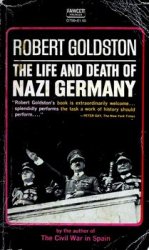Armies fi ghting over territory and religion throughout Europe were enormous consumers
of grain and other foodstuffs, and they also had an insatiable appetite for metal,
particularly after the development of gunpowder-based weapons. By one calculation, a
siege of an average-size city at the end of the sixteenth century used more than 10,000
cannonballs per day , to say nothing of the metal required to make the artillery that shot
those cannonballs. Warfare used huge quantities of copper, lead, tin, iron, and various
mixtures of these, and the demand for metal in architecture, housing, and other crafts
increased as well.
Metals to be smelted require large amounts of fuel, which in the Middle Ages had
primarily meant wood or charcoal made from wood. Wood prices increased and many
areas were deforested, leading to soil erosion and other environmental problems. Coal
was increasingly used as an alternative to wood, and coal mining dramatically expanded
in certain areas. Around the city of Liège in the Low Countries it nearly quadrupled
in the fi rst half of the sixteenth century, and in the English counties of Northumberland
and Durham it grew tenfold from 1500 to 1650. Coal and metals were often
found in different places, however, and relatively inexpensive transportation networks
needed to be devised to bring these two bulky, heavy commodities together. Water was
the easiest way to do this, which explains why the Rhineland-Palatinate, an area of
Germany where the rivers Rhine, Neckar, and Main join, produced as much iron as all
of France; nearly one-quarter of the population of the Rhineland-Palatinate were involved
in iron production. Coal did not burn cleanly enough to produce high-quality
iron or steel, however. (Steel is an iron alloy that contains less than 2 percent carbon.)
For that charcoal was still required, which is why Sweden, with copper and iron mines,
but more importantly with virtually endless forests that could be turned into charcoal,
became Europe’s largest single supplier of copper and iron.
Mining and metal production in the Middle Ages were largely organized in the same
way as other crafts were, with groups of artisans in guilds or associations who leased
from landowners the land on which ore was to be found. As the demand for metals
went up, however, complex machinery was needed to dig and maintain deeper tunnels
and speed up production processes. This was too expensive for artisans, but as
the price and possibility for profi t were also going up, other players became interested.
Rulers, including the popes and various members of the Habsburg family, opened or
expanded mines; the popes had a monopoly on alum, a mineral used for fi xing dye
in cloth, and the Habsburgs held copper and silver mines. In eastern Europe, noble
landowners opened new mines and iron foundries on their estates, using some of the
profi t they had earned from the grain trade to build blast furnaces, gravitational or hydraulic
pumps to get water out of mine shafts, devices for ventilating shafts, and other
types of machinery. As part of their increased labor obligations, serfs on these estates
were required to cut wood or haul raw materials. Private individuals and family fi rms
also expanded mining operations through large amounts of initial investment and the
increasing use of machines.
Mining and the production of metals came to involve an elaborate division of labor,
as well as signifi cant investment of capital. Adult men did most of the work underground,
and broke the ore into large pieces. Older men, adult women, and children
sorted, washed, and further broke apart the ore, and also prepared charcoal briquets
for use in smelting. Miners were often hired as families, though only the adult men
were listed in records; for example, men might be paid per basket for ore, but it was
expected that this ore would be broken into small pieces and washed, jobs done by
their wives, sisters, and children. One of the best sources for understanding this division
of labor, as well as other aspects of mining, is De re metallica (1556), a huge
well-illustrated treatise on mining and metallurgy written by the German humanist
Georgius Agricola (1494–1555). Agricola describes surveying techniques, machines,
laboratories, and the organization of operations, and provides standardized language
to describe mining operations. His text includes nearly 300 illustrations, and provides
thorough grounding in both the practical aspects of mining and more theoretical issues
about the relationships between humans and their natural environment .
|
|
||||||||
|
Www.WorldHistory.Biz
|
 
9-08-2015, 15:47
Mining and metallurgy
  |
|||||||
 |
 |
 |
 |
|||||
|
||||||||


 World History
World History





